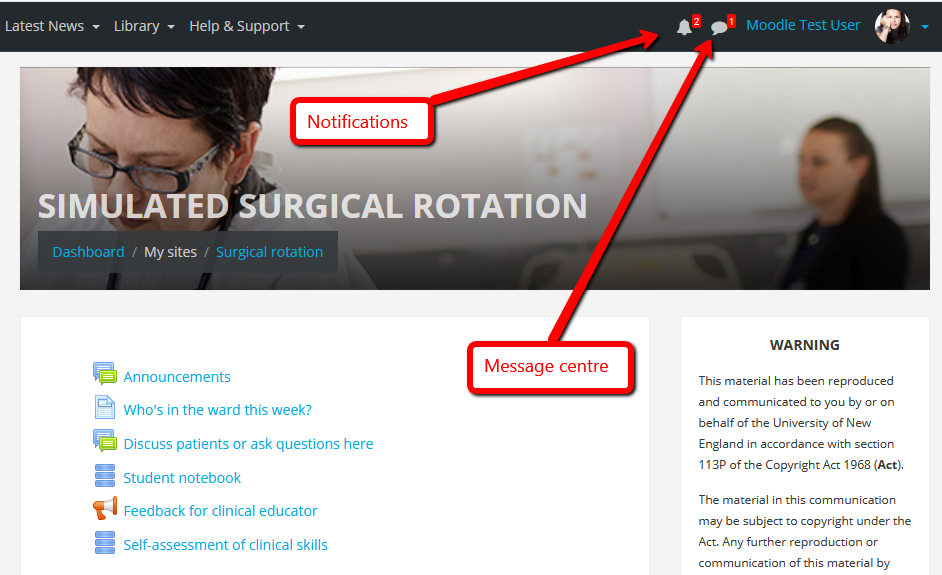Quick start / About
| Global: | UNE myLearn |
| Site: | Rotation 1 2020 Simulated surgical experience |
| Book: | Quick start / About |
| Printed by: | Guest user |
| Date: | Tuesday, 23 December 2025, 12:44 AM |
Quick start
On each day you for which you have a ward round scheduled, from 8:00am you should:
STEP 1. Go to the timetable, Who's in the ward this week? to find out which patients you will be seeing. From there, you can click through to the patients scheduled for the day.
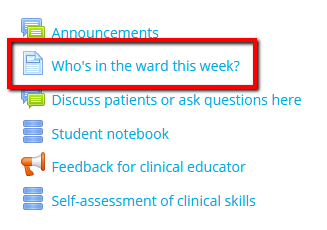
STEP 2. Review the material provided in Preparing for Session 1, particularly the page ‘Guiding questions’ which will help you focus your preparation to see the patient.
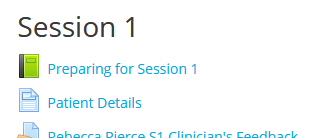
STEP 3. Consider the Patient Details available which will give you a brief patient profile and HPC
To find out more about this site, select from the topics in the Table of Contents on the right hand side of this screen (or below if you are viewing this on a mobile device).
Good luck with your simulated clinical placement!
About this site
Through providing you with patient data, clinical media, briefings and readings, this site supports engagement with your simulated surgical rotation at the Tablelands Clinical School (TCS). The content will be revealed to you at predetermined points in time to help you prepare for the patients you will see and simulate the timely provision of clinical data to assist you in the application of the clinical method. For some patients you will also be able to view video of the surgical procedures they are undergoing.
This site is not like most other teaching sites, which are typically structured in a week-by-week or topic-by-topic approach. Rather, it is structured by patient, reflecting the patient-centric nature of ward rounds. Patient data and clinical media are revealed progressively throughout the eight weeks as the patients come into the ward. Information about the patients is only revealed at the point you need it.
So, on the first day of the rotation, only two patients will be visible online. Although patients do leave the ward, their information remains available to you online throughout the rotation. You can refer back to these 'Patient Management Records' in case the patient returns and also to facilitate your further learning and revision. By the end of the rotation, you will see all patients listed (alphabetically, by surname) from top to bottom.
Structure of a day on the ward
Twice a week throughout this surgical rotation (usually Monday and Thursday), you will be attending the Tablelands Clinical School where you will see simulated patients in the course of a ward round. These days will be structured broadly as follows:
8:00-10:00 am: Preparing for your ward round
10:00-12:00 noon: Your ward round
12:00 noon: Results of investigations and feedback
8:00-10:00 am: Preparing for your ward round
In this two-hour window, you should read around the topic, research and refer to guidelines on diagnosis and the management of the cases. You may discuss the cases with your peers and even convene for a pre-sim discussion without the clinical educator present. At 8am, content becomes available online, notably:
- Preparing for Session 1: objectives, skills and guiding questions for the case
- Patient Details: name, age, sex and initial HPC
Plus, the first time you see a particular patient, you will be provided with required pre-reading and recommended references in the section, Before you start ...
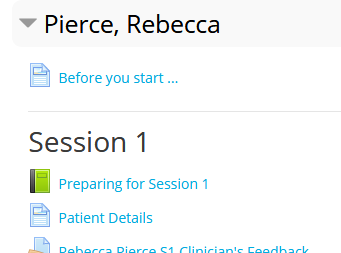
10:00-12:00 noon: Your ward round
At 10am, further content becomes available online, notably the Briefing by Clinician, which briefly explains your role and what you are to do next.

During this time, you will convene with the clinician to conduct the simulation session. For each patient seen:
- Two students will take the role of JMO and see the patient in order to gather a history, perform a brief examination and review available data to assess the current status of the patient.
- The rest of the class and the clinician will be observing from outside the room.
- A debrief with all parties present follows. History-taking techniques and examination skills will be discussed and feedback given.
- A management plan will be presented by the selected students
12:00 noon: Results of investigations and feedback
At noon, the final online elements will be provided to all students. These will include:
- Revised Patient Details - now including a complete and detailed patient history
- Patient Docs - including results of investigations
- Debrief / Teaching Points - which may have been used by your clinical educator during the ward round - and can be used by you in revision.
This is also the point at which you should complete your Feedback on clinical educator.

Patient Docs includes all clinical media relating to the patient and can include many items classified in up to four categories, depending on the case. The categories are:
- Correspondence
- Hospital Documentation
- Lab Reports
- Radiology
Some Patient Docs may be released to you during, or even before the ward round.
Occasionally, other items will be provided, for example procedural videos, in between rounds.
Student notebook
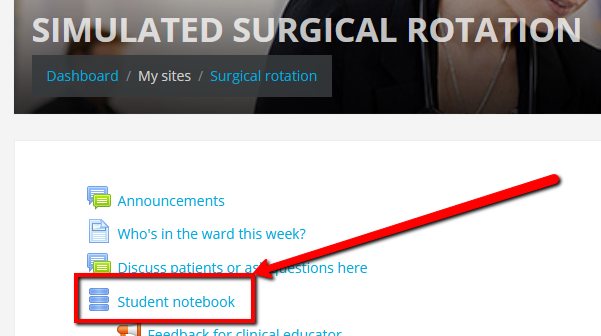
A simple notebook is provided for you to record notes for each patient:
- Information gathered from your preparation time, including questions to ask your patients and symptoms to look out for
- History-taking notes
- Observations and investigations
- Proposed management plans
To add an entry into the student notebook:
- Double-click ‘Student notebook’
- Select the ‘Add entry’ tab
- Fill in the required fields and click ‘Save and view’.
Your notes are searchable and remain visible only to you.
Assessment and feedback
As well as patient and clinical data, this site also facilitates various forms of feedback:
- A place for you to give feedback on your clinical educator
- A place for you to conduct a brief self-assessment after seeing each patient
- A place for you to receive feedback (from your clinical educator) on your performance in the ward round when it’s your turn.
Complete after every ward round to assist with continual improvement and research outcomes. Simply click the link to launch the survey and answer the questions.

Self-assessment of clinical skills
Complete after every patient/session in order to reflect on the development of your clinical skills. This self-assessment is visible only to you and teaching staff.

To add an entry, click the 'Add entry' tab and answer the questions.
To view previous self-assessments, click the 'View list' tab and select from the entries listed by clicking on the magnifying glass beside the date.
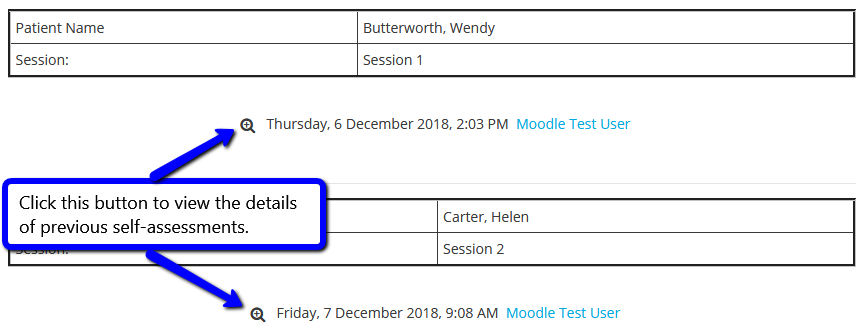
Feedback from your clinical educator
Your clinical educator will provide feedback at the end of each ward round. To view your feedback, click on the 'Clinician's Feedback' link at the end of each patient session.

Here you will be able to see how you will be assessed (beforehand), as well feedback on your performance if you were one of the students participating in the simulation. This feedback is visible only to you.
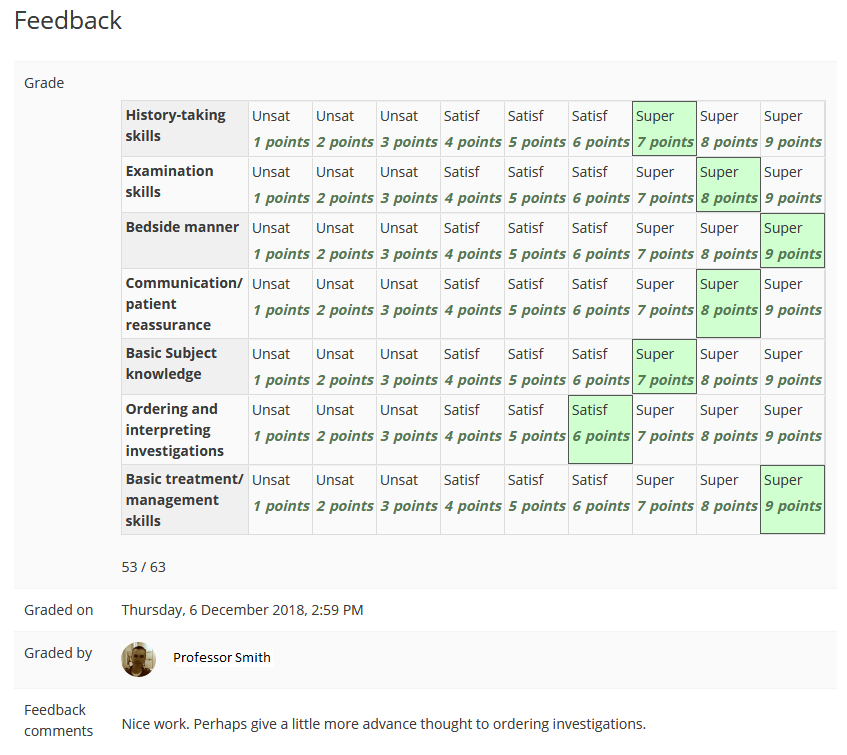
Communications
The site provides a range of ways for you to communicate and collaborate with your clinical educators and other students.
- Announcements from your clinical educators
- An open forum where you can raise questions with your clinical educators and other students called Discuss patients or ask questions here

- An instant messaging feature which you can use to chat directly with individual students and your clinical educators if desired.
